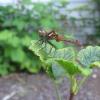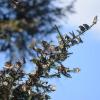Daniel Potvin-Leduc is one of our Bumble Bee Watch Stars, having contributed at least 19 species and 919* records in just over three years. Wow! He is currently ranked as the #1 contributor for Quebec, and has submitted records from the far south of that province, along the St. Lawrence River from Montreal up into the Gaspè Peninsula, through to the far north, along James Bay, Hudson Bay, and Ungava Bay. We recently interviewed him about his experience participating with BBW. Here is what he had to say.
*Note: totals are as of September 21, 2021. We’re sure Daniel is still submitting lots of great records and will soon hit the 1,000 mark!
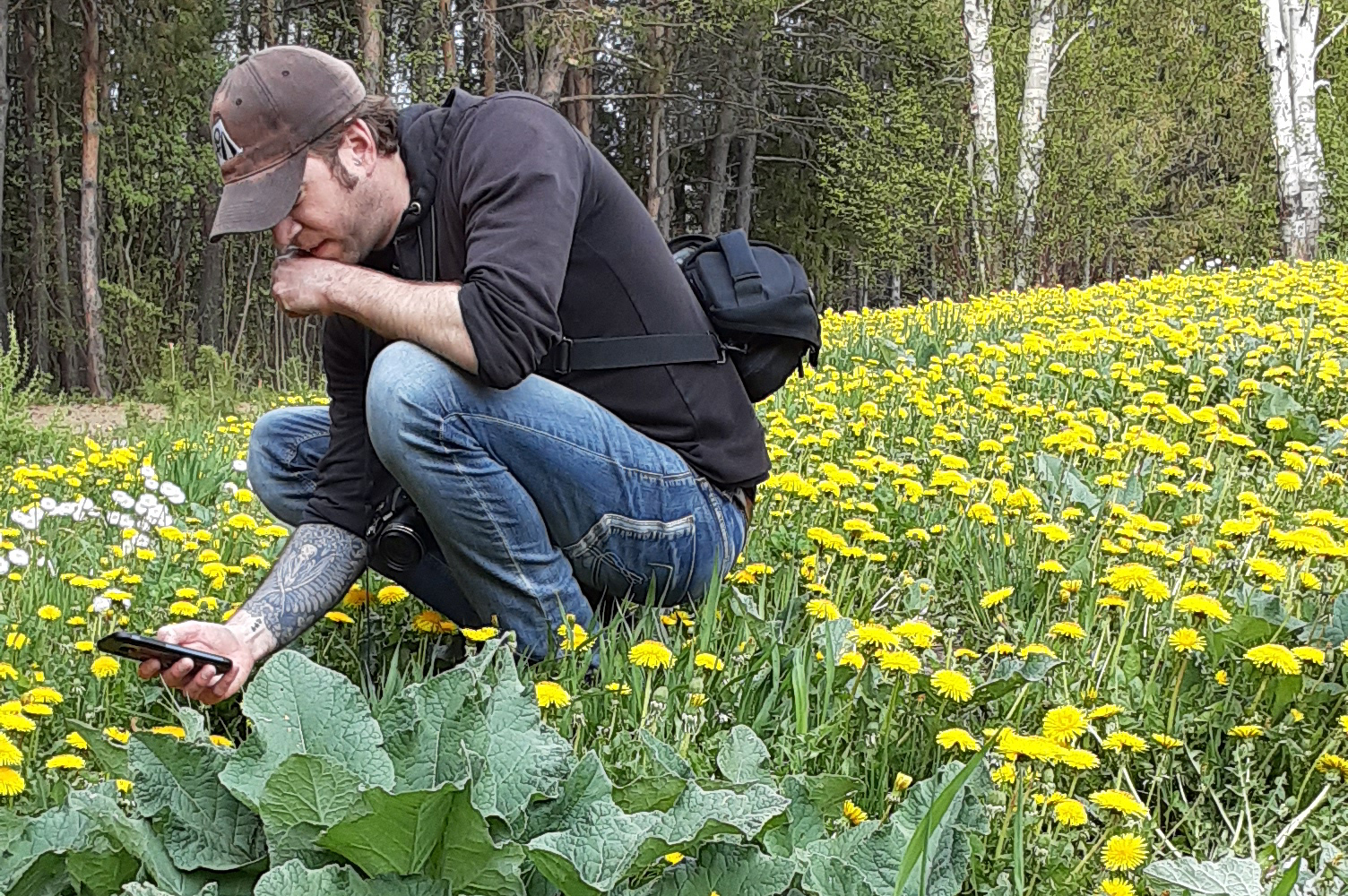
Daniel in the field photographing bumble bees on dandelions. (Photo: Courtesy Daniel Potvin-Leduc).
1. When did you join BBW?
I joined in July 2018.
2. Why did you join BBW?
I was introduced to BBW by my girlfriend. Given that I was then living in a city relatively far north from the big cities (Chibougamau, in northern Quebec), and thus less likely to get documented, and the scarcity of data from the province of Quebec compared to the other states and provinces on BBW, I thought that if I could provide some observations, maybe that would prove useful.
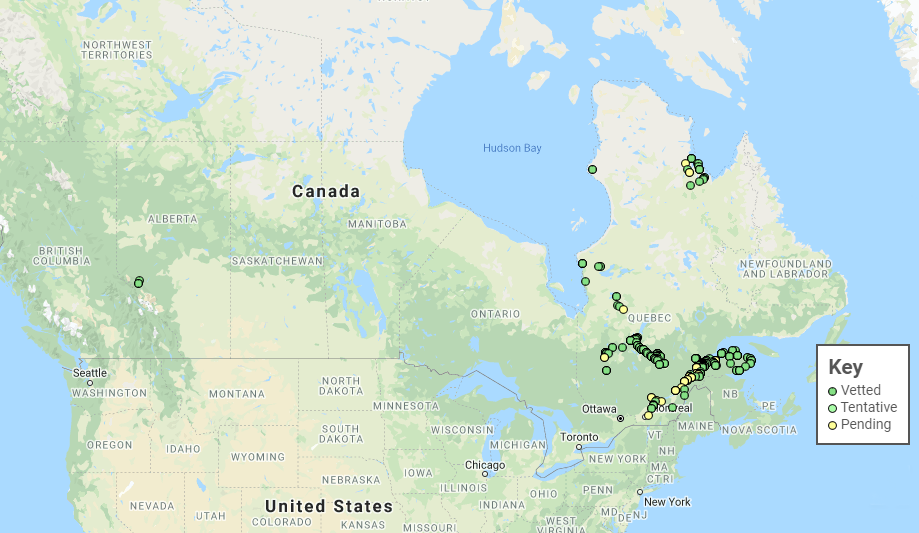
A map showing the location of Daniel’s contributions, including along the northern edges of Quebec. He is ranked #1 for Quebec for the most records and species. (Screen shot from bumblebeewatch.org).
3. Do you have any formal training with bumble bee surveys or identifications?
I have no training at all with bumble bee surveys or ID. Before joining BBW, I'm pretty sure that, if asked, I would have said that I thought there was only one species of bumble bee...
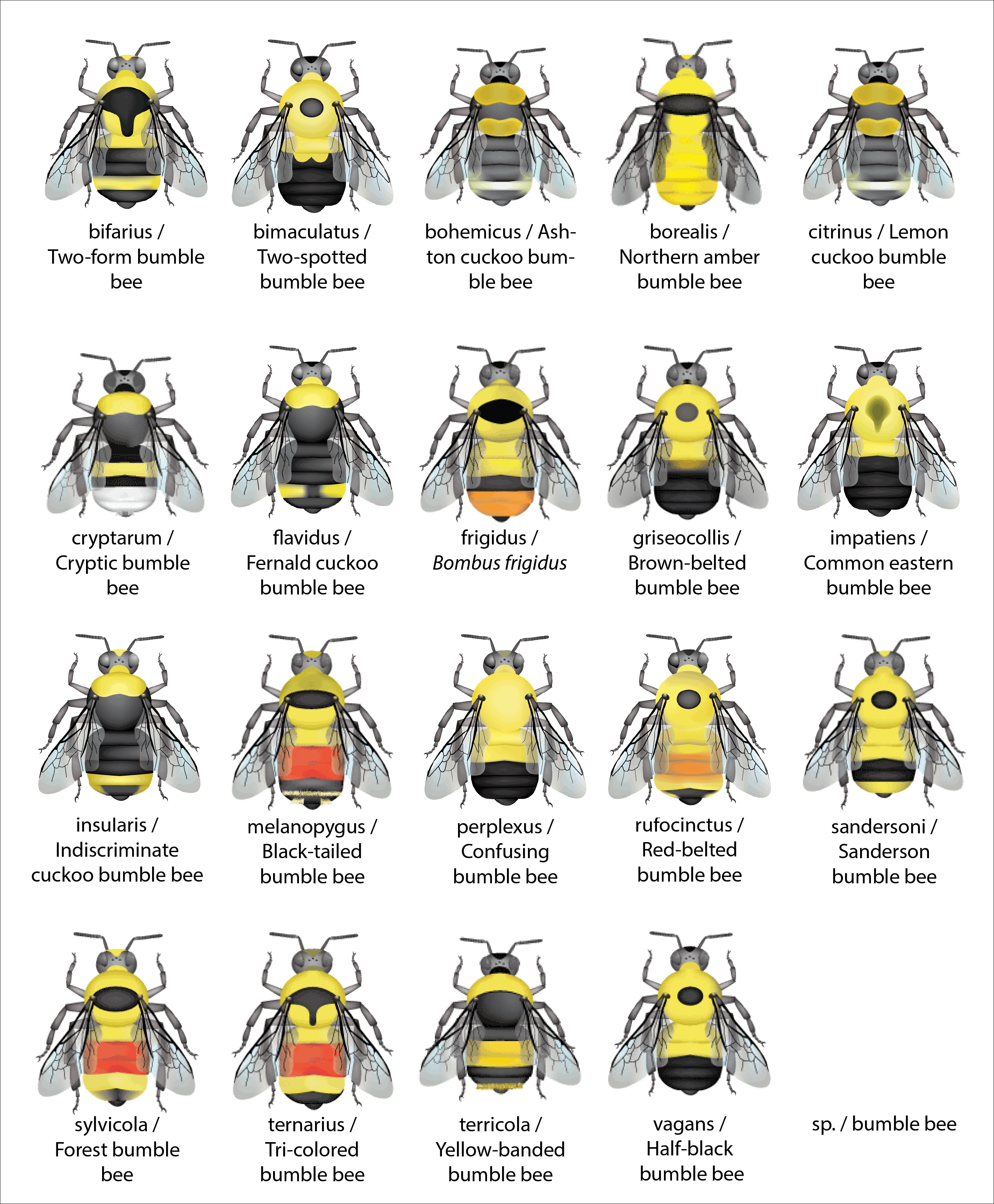
Daniel has found at least 19 species of bumble bees, as can be seen from the collection of species badges on his profile. (Bumble bee illustrations by Paul Williams [identification and color patterns] and Elaine Evans, Rich Hatfield [bee body design]).
4. Do you contribute for work or pleasure or both?
I contribute for pleasure.
5. Do you participate in other community science programs? If so, what ones/what taxa?
BBW was my introduction to [community] science. Since then, I also started contributing to iNaturalist. I'm partial to animals, and mostly insects, with a preference for damselflies, dragonflies, and pollinators. Of those, I found that I'm very interested in syrphids and bee mimics. I also started documenting moths about a year ago. Since I don't know much about flowers, this has also helped me to learn about what the bumble bees were feeding on.
6. What is your favourite bumble bee species and why?
I'll have to go with Bombus borealis (the northern amber bumble bee); they're often bigger than the other bees where I live and they act as if they were pretty much impervious to any disturbance, so I just enjoy seeing those huge, flashy yellow bees going around their business as if they own everything.
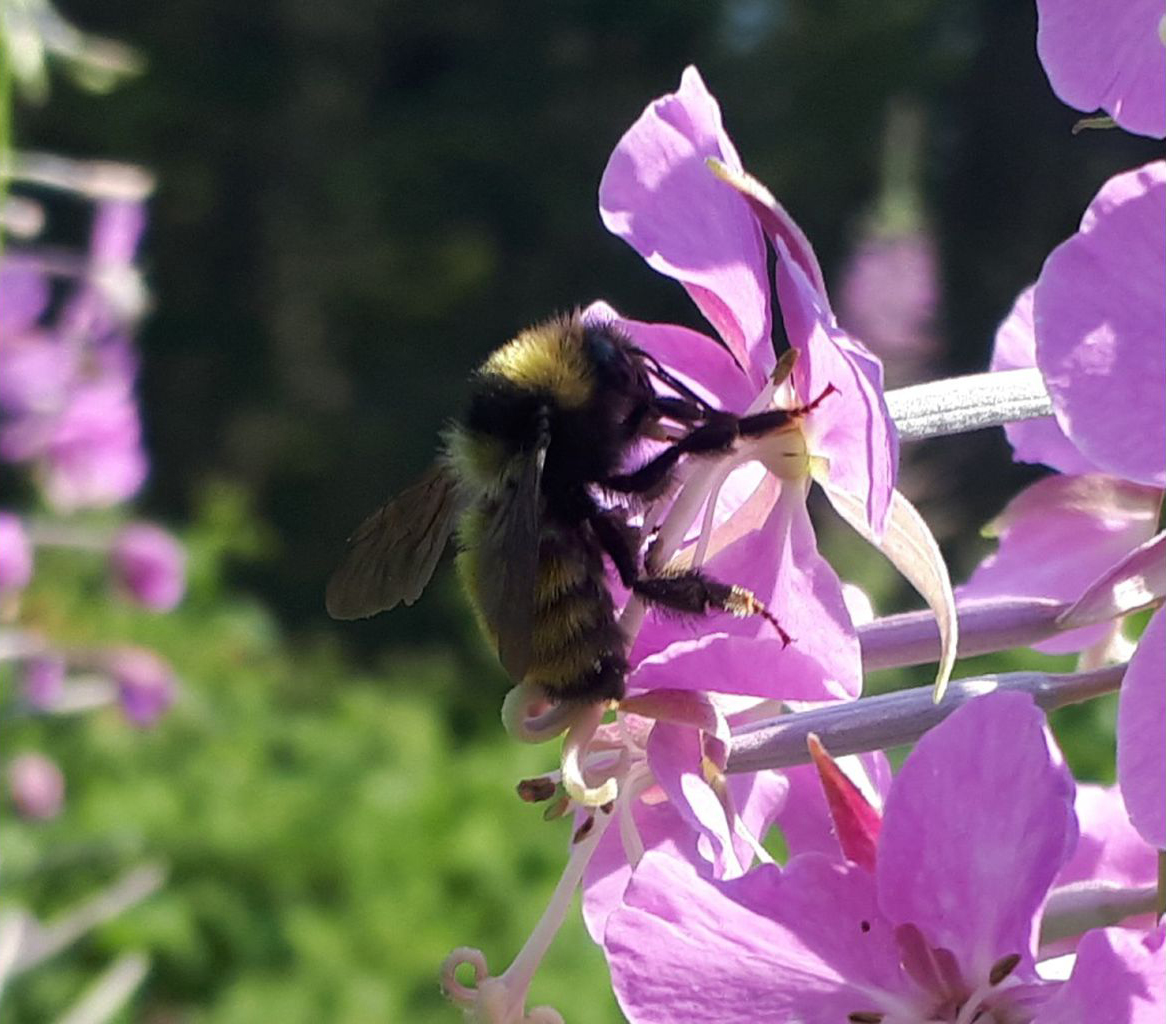
Northern amber bumble bee on fireweed. (Photo: Daniel Potvin-Leduc).
7. What do you like the best about the BBW program?
Contributing to BBW feels useful. With many species, pictures from the field will be sufficient to enable identification, so to be able to provide data without being too intrusive is really great. I've learned a lot, as well, and just looking for bumble bees has made me discover a lot of other insects that I would never know existed. There was a lot I wasn't aware of, and BBW led me to be more engaged with the small natural things happening all around me.
8. How did you feel when you saw in the field/learned you were the first to document the Bohemian cuckoo bumble bee* (Bombus bohemicus) in eastern Canada since 2008?
I think it still has to sink in... I had absolutely no idea that this what was I had observed at the time. I was aware that the Bohemian cuckoo bumble bee had not been documented in a long time and while I thought it would be nice to find one, I never thought I would get the lucky break. It is special and I feel privileged to have been able to contribute in this way.
[Daniel took two videos of this species, you can watch them on YouTube here and here.]
*Note: This bee has been known as the gypsy cuckoo bumble bee, but we are using the preferred alternative common name, the Bohemian cuckoo bumble bee (after the area it was first identified from), to avoid using a culturally offensive slur.
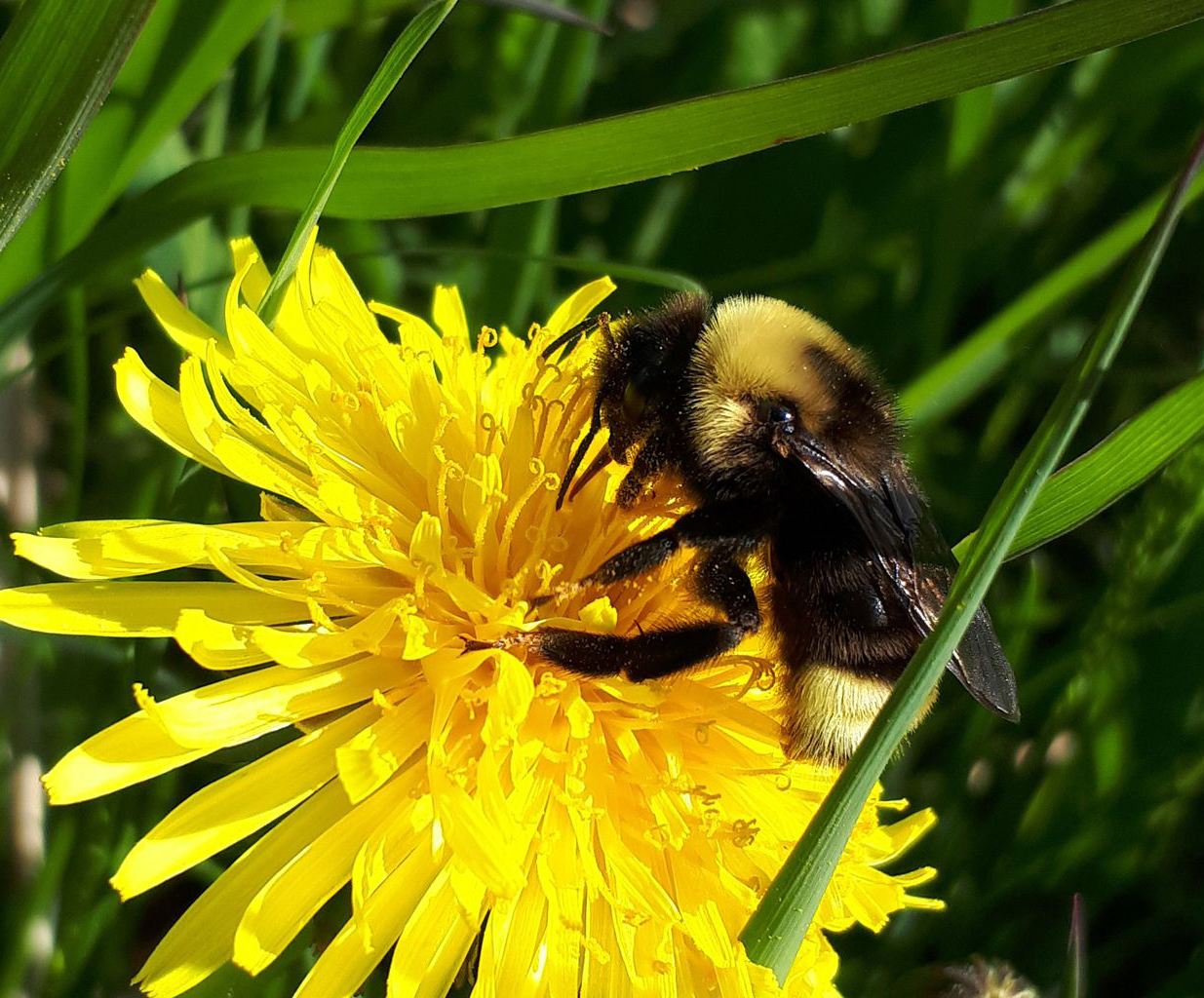
The Bohemian cuckoo bumble bee had not been seen in eastern Canada since 2008 until Daniel photographed it in Quebec in 2020. (Photo: Daniel Potvin-Leduc).
9. What tip(s) would you pass on to others interested in participating with BBW, such as techniques for finding or photographing bees in the field, for sharing observations, for learning more about bees, etc.?
I found that it helps to take the time to stop and concentrate on looking specifically for bumble bees. I know that my eyes are not necessarily "wired" for insects and, if I don't, at time, force myself to stop and start looking directly for bees, I might easily overlook them. Usually, by the end of summer, it will have become natural, but it does help to retrain myself every spring.
I also tend in the beginning of the season to come in too fast for my pictures—after the wintertime, I'm excited to see the bumble bees again and I end up disturbing them as I rush in to try and take a picture! They're rather docile, so it's not a problem to get in very close, if I remember to take my time.
I also found that, as for many things, observing a lot helps in—slowly—starting to recognize the different species. Another benefit of numerous observations is that, by seeing many individuals, it becomes easier to spot a different pattern, whether it is a weird individual or another species altogether. It's also a good idea to remember, from time to time, to put the camera or the phone away and just enjoy looking at the bees.
10. Is there anything else you'd like to share?
One thing that I found fantastic and that I can't get enough of is looking for the wet bumble bees that you'll find hiding under flowers after the rain.
Thank you to Daniel and all our other Bumble Bee Watch participants for their ongoing contributions to the program. Whether you have submitted hundreds of observations or only one, every contribution is valuable as they each add to the body of knowledge. To explore your own efforts made to Bumble Bee Watch, check out your main profile, the gallery, or the map!
Further Reading
Ready to become a Bumble Bee Watcher? Sign up for free and follow along on Facebook.
Looking to get more involved? Join one of our regional Bumble Bee Atlases!
As we await bumble bee emergence in spring, learn where pollinators go in the winter.

